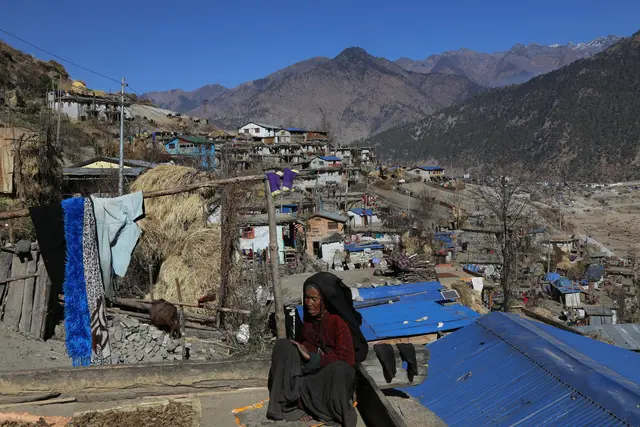By APD writer Huang Rihan
Translated by Lu Jiafei
The Year 2017 was an extraordinary year for the Belt and Road Initiative, a vest development strategy starting in China and spanning across Eurasia.
On Feb. 10, the Chinese concept of building “a human community with shared destiny” was incorporated into a UN resolution; on May 14 and 15, 29 heads of state and government leaders, as well as some 1,500 representatives from over 130 countries and over 70 international organizations attended the Belt and Road Forum for International Cooperation in Beijing.
Belt and Road Forum for International Cooperation in Beijing
At the 19th National Congress of the Communist Party of China (CPC) in November, Chinese President Xi Jinping stressed that we should pursue the Belt and Road Initiative as a priority, give equal emphasis to “bringing in” and “going global,” follow the principle of achieving shared growth through discussion and collaboration, and increase openness and cooperation in building innovation capacity. With these efforts, we hope to make new ground in opening China further through links running eastward and westward, across land and over sea.
Also, the CPC has incorporated pushing for Belt and Road Initiative into CPC Constitution, reflecting the determination and confidence of China, under the leadership of the CPC, to attach great importance to the construction of the Belt and Road Initiative and firmly promote international cooperation in this respect.
Early this year, Finnish President Sauli Niinisto said that Finland is willing to contribute to the "One Belt One Road" initiative launched by China. Apart from participation of the Northern European countries into the Belt and Road Initiative, Latin American countries, south Pacific island nations have also responded positively to the initiative.
Needless to say, after four years of effort, in 2017 the Belt and Road Initiative has gradually become a global public product accepted by many countries around the world.
So far, in 2017, the Belt and Road Initiative has made impressive progress in connectivity in five areas.
In terms of policy communication, China hosted the Belt and Road Forum for International Cooperation in Beijing and the BRICS Summit in Xiamen, both major diplomatic events which effectively promoted policy communication. In addition, Chinese leaders have actively engaged in policy communication and connectivity through the ASEAN Summit, the Lancang-Mekong Cooperation initiative, China’s 16+1 formula with Central Eastern Europe, G20 Summit, the APEC summit.
On trade, progress has also been made. Development of the China-Europe block train has been further promoted and overseas industrial park construction has achieved positive progress. What’s more, the cross-border business, advocated by Chinese Internet companies, has achieved smooth trade globally through the EWTP building, the use of artificial intelligence and the development of modern logistics.
On financing, the Asian Infrastructure Investment Bank has been prudent in choosing projects, seeking to put funds into good use and to create fine works projects. In addition, the establishment of the BRICS Development Bank was moving forward in an orderly manner. China’s policy banks and commercial banks were also working hard on financing. Meanwhile. Tencent and Ant Financial, both China’s private companies, have made substantial progress in financing, with Alipay having access to the markets of over 25 countries.
On infrastructure, China’s state-owned enterprises have accomplished much. Major progress has been made in the development of the Colombo port city and the Hambantota port in Sri Lanka, as well as the Gwadar port of Pakistan. The buildings of the China-Laos railway, Malaysia railway and China- Myanmar oil and gas pipelines have also made progress.
On cultural exchange, Chinese culture and tourism has achieved “bringing in” and “going global.” The Confucius Institutes and the teaching of the Chinese language have ensured that apart from helping the local people to build infrastructure, we help them to develop skills. In other words, the cultural exchange helps to achieve the connectivity between the Chinese culture and other cultures.
In a nutshell, the promotion of the connectivity in the above-mentioned five areas is obvious to all. The reason why China’s Belt and Road Initiative has become a global pubic product is because that under the background of a world in urgent need of new economic development momentum, many countries have realized that only by connectivity and the spirit of achieving shared growth through discussion and collaboration can we promote the development of the world economy.
Thanks to the development of connectivity in the five areas, breakthrough has been made in the Belt and Road Initiative in 2017. Meanwhile, the establishment of the six economic corridors and three blue ocean economic channels has been further implemented.
For a newly created project, the Belt and Road Initiative deserves praise for its tremendous achievements in such a short period of time. Its prospect in the upcoming year is something worth looking forward to.
Huang Rihan, Research Fellow at Asia Pacific Institute, Assistant to the Dean of International Relations College in Huaqiao University, Director of Globalization and Governance and the B&R institute. He is a political contributor to APD.
(ASIA PACIFIC DAILY)
 简体中文
简体中文

